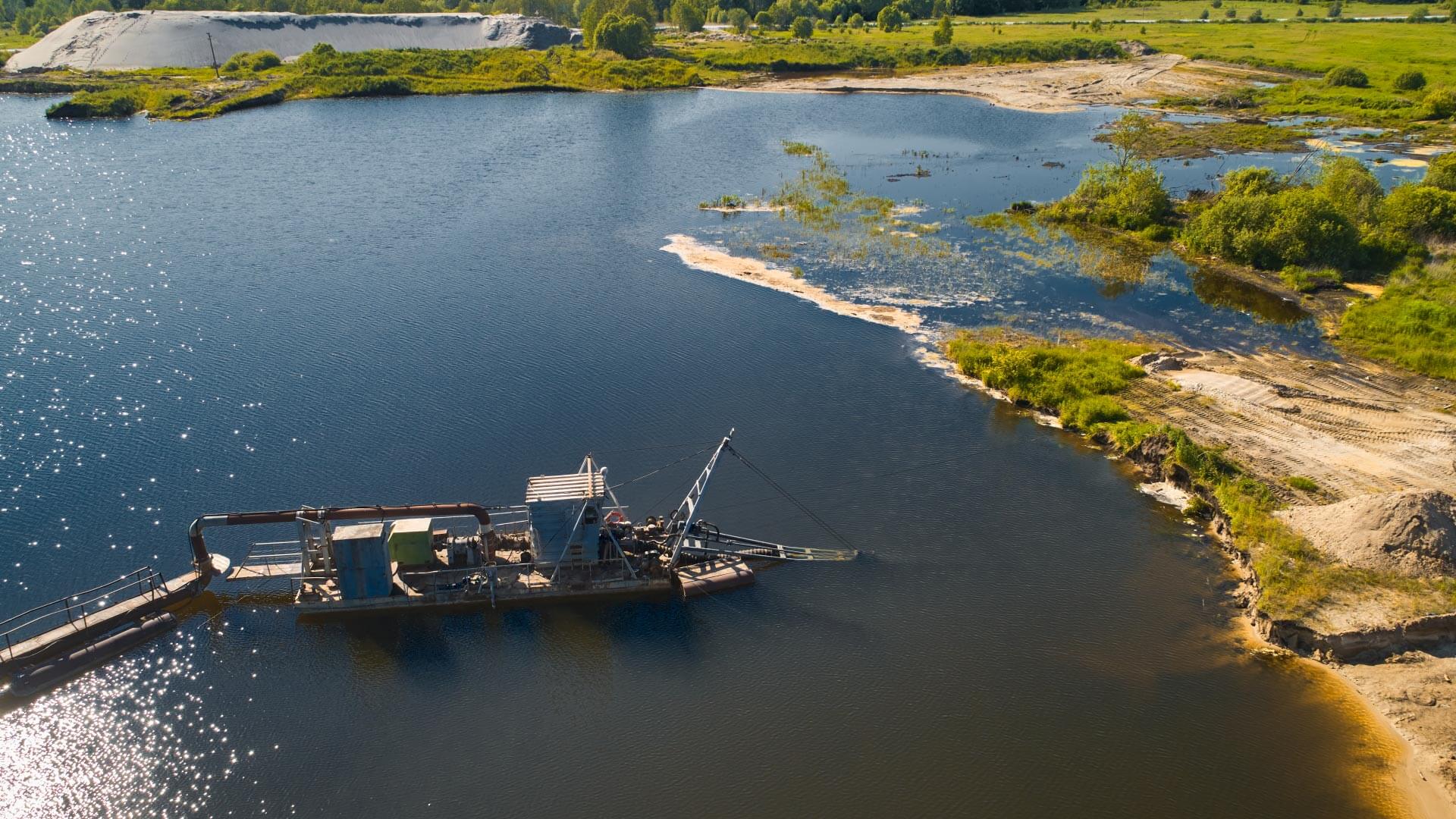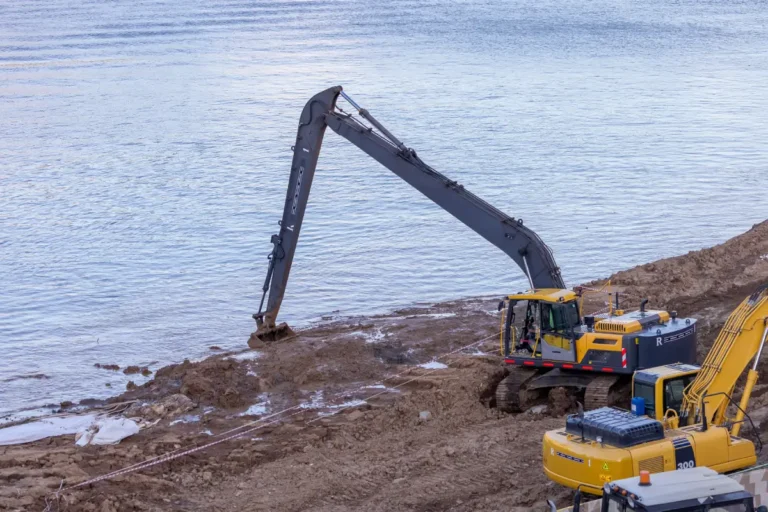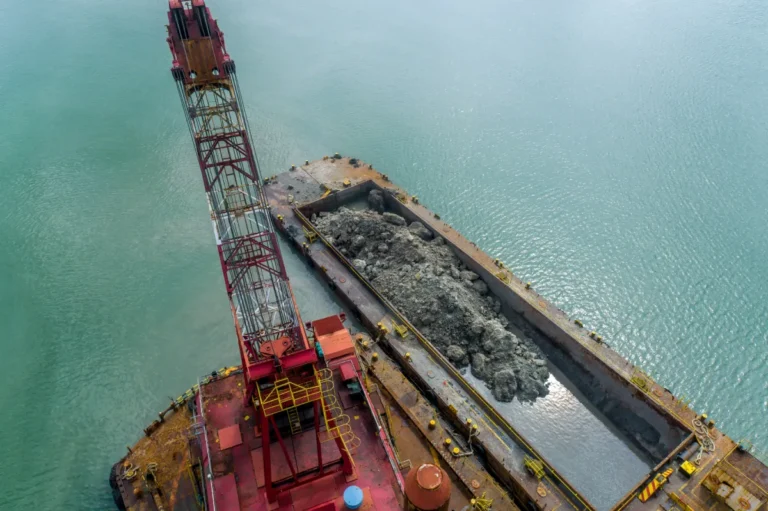River dredging is crucial for maintaining the health and functionality of waterways. It involves removing accumulated sediments, debris, and other materials from riverbeds to restore water flow and depth. This practice is essential for ensuring safe navigation, reducing the risk of flooding, and preserving aquatic ecosystems. Unlike other dredging activities, such as dredging for a lake, river dredging often involves unique challenges due to the dynamic nature of flowing water and varying sediment compositions.
The importance of river dredging cannot be overstated. Properly maintained rivers support commercial and recreational navigation, protect surrounding communities from flood damage, and create healthier environments for wildlife. By preventing sediment buildup, river dredging helps maintain the natural balance of waterways and supports sustainable water resource management.
However, undertaking a project to dredge the river comes with its fair share of challenges. From navigating strict environmental regulations to dealing with unpredictable sediment compositions and selecting the right dredging equipment, every project requires careful planning and execution. These challenges can become even more complex when compared to projects where you dredge for a lake, as rivers often present additional obstacles such as strong currents and logistical constraints.
This blog will explore the top challenges encountered in river dredging projects and provide practical solutions to overcome them. Whether you are involved in a small-scale dredging operation or a large commercial project, understanding these challenges and how to address them will be key to ensuring success.
Understanding River Dredging
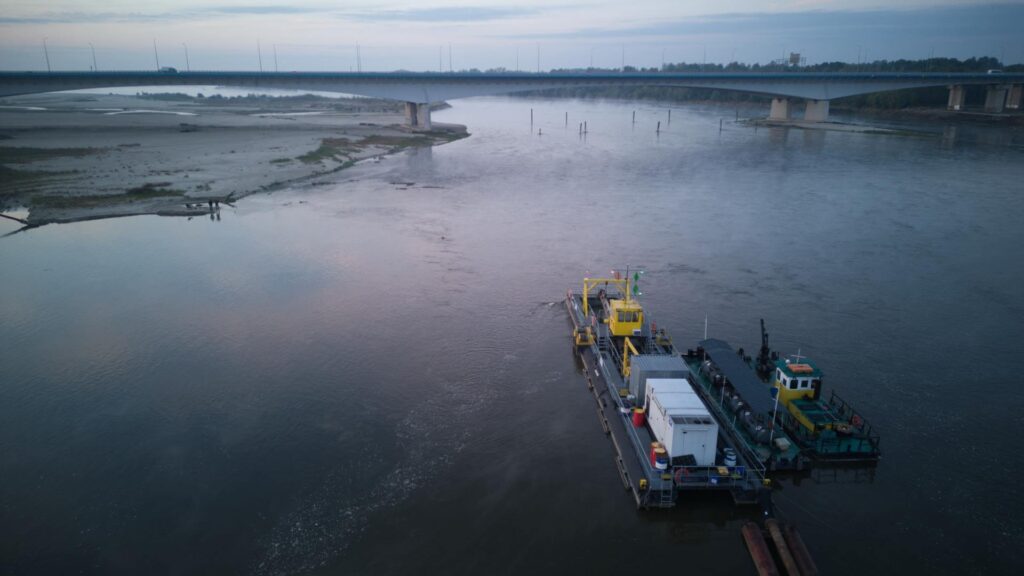
Definition and Objectives
River dredging is the process of removing sediment, debris, and other materials that accumulate on river beds and banks. Over time, natural sedimentation and human activities can cause rivers to become shallower, reducing their capacity to support navigation, manage floodwaters, or maintain healthy ecosystems. River dredging helps restore these waterways to their intended depth and functionality, ensuring they continue to serve critical environmental and economic purposes.
The primary goals of river dredging projects include:
- Navigation: Ensuring that rivers remain passable for commercial ships, recreational vessels, and other forms of water transportation. Proper dredging allows for safer and more efficient travel along waterways.
- Flood Control: Dredging for rivers helps increase their capacity to manage high water volumes by preventing sediment buildup that can restrict water flow, leading to overflow and flooding during heavy rains or storms.
- Ecosystem Restoration: Removing accumulated pollutants and sediments that degrade water quality while also creating healthier habitats for aquatic and riparian species.
Difference Between River Dredge and Dredge for Lake
While the basic principles of dredging remain the same, there are distinct differences between river dredging and efforts to dredge for a lake. Rivers are dynamic systems with flowing water, which presents challenges such as strong currents, sediment transport, and erosion. These factors make it more complex to dredge a river compared to the relatively still waters of a lake.
For instance:
- Sediment Composition: River sediment is often more varied and includes natural materials like sand and silt as well as human-made debris that must be carefully managed. In contrast, lakes may have more uniform sediment layers.
- Flow Management: Unlike lakes, where water is relatively stagnant, rivers require strategies to manage continuous water flow during dredging operations. The moving water can disrupt dredging equipment and increase project complexity.
- Environmental Impact: River dredging often has more significant ecological consequences due to its potential impact on downstream ecosystems. Careful planning is necessary to ensure minimal disruption to river habitats, which differ from lake ecosystems.
Key Challenges in River Dredging Projects
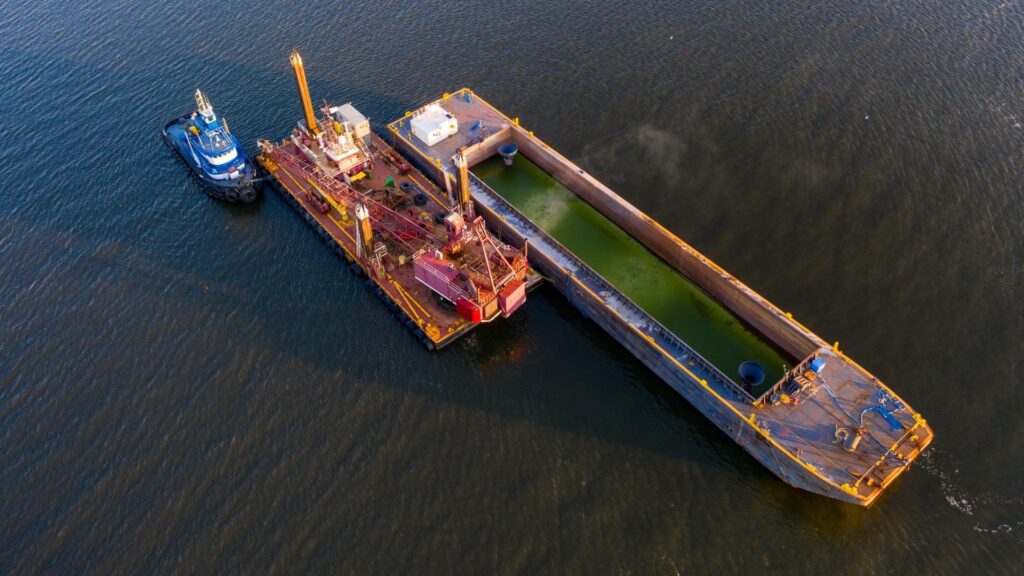
Environmental Impact
One of the most significant challenges in river dredging is managing its potential environmental impact. Removing sediment can disturb aquatic habitats, ecosystems, and water quality. Fish spawning grounds, plant life, and other critical habitats may suffer if dredging is not carefully planned and executed.
Another key concern is sediment disposal and contamination. Sediments removed during a dredging project may contain pollutants such as heavy metals, chemicals, or organic waste. Properly disposing of or treating these materials is essential to prevent secondary contamination in other locations. This challenge is particularly pronounced when comparing river dredging to dredging for lakes, as river sediments often have a higher likelihood of contamination due to continuous flow and upstream pollutants.
To address these issues, strict environmental regulations govern dredging operations. Compliance with these regulations is critical to minimizing ecological damage and ensuring sustainable practices. Pre-dredging surveys and environmental impact assessments are essential to planning for challenges and effectively implementing mitigation measures.
Sediment Composition and Volume
Sediment composition and volume are major challenges in river dredging. Unlike projects that involve dredging for lakes, river environments often feature a mix of sediment types, including sand, silt, clay, and even gravel. This variability can complicate dredging operations, as different sediment types require different handling techniques and equipment.
Another hurdle is managing large sediment volumes. Rivers often accumulate significant amounts of sediment over time due to erosion, upstream activities, and natural deposition. Removing these volumes efficiently without disrupting water flow or causing further environmental damage requires advanced planning and specialized equipment.
Equipment Selection
Choosing the right equipment for a river dredging project is critical to its success. Rivers present unique challenges due to their flowing water, varying depths, and diverse sediment compositions. The equipment must be capable of handling these complexities while maintaining efficiency and minimizing environmental impact.
One key consideration is that not all dredges are suitable for river environments. While certain dredges may perform well when dredging for lakes, they may not be effective in rivers due to strong currents and the need for precise sediment removal. Selecting the appropriate dredge for a river project ensures efficient operation and reduces the risk of equipment failure.
Navigational Constraints
River dredging often faces navigational challenges that can delay or complicate operations. Unlike still-water environments, rivers are characterized by flowing water, which can hinder dredging activities. The constant movement of water affects the stability of dredging equipment and makes precise sediment removal difficult.
In addition, accessing hard-to-reach areas within a river can be a significant challenge. Rivers with narrow channels, shallow areas, or dense vegetation require specialized equipment and innovative techniques to ensure all parts of the river are properly dredged. These constraints are generally less pronounced when you dredging for lakes, where access is typically more straightforward.
Budget and Project Delays
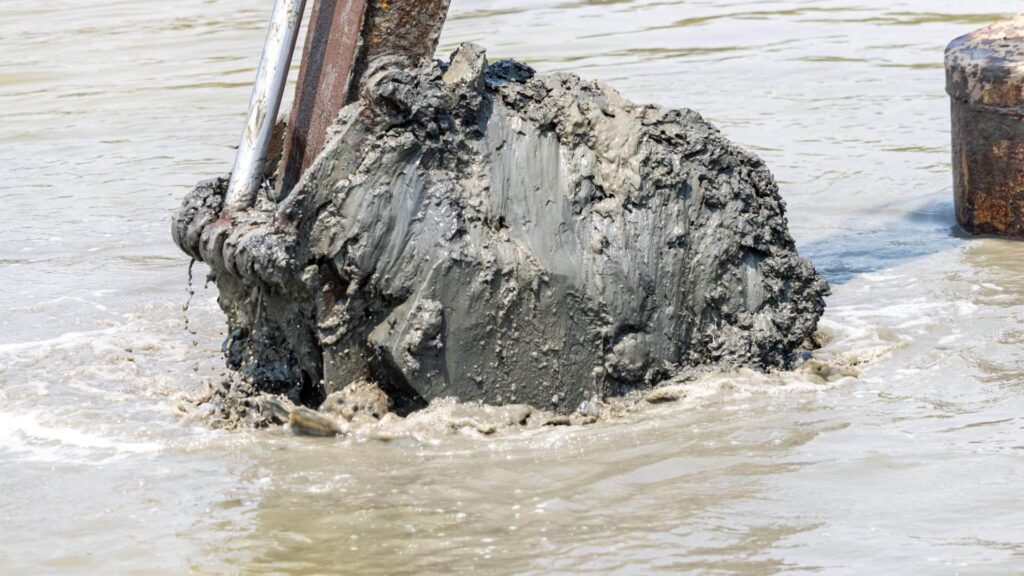
River dredging projects are often expensive, making budget management a critical challenge. The expenses of specialized equipment, skilled labor, compliance with environmental regulations, and sediment disposal can quickly add up. These costs are compounded by the unpredictable nature of dredging operations, which may encounter unforeseen obstacles such as hidden debris, equipment breakdowns, or adverse weather conditions.
Delays are another common issue. Securing permits, complying with regulations, and dealing with unexpected challenges can extend project timelines. Additionally, logistical challenges, such as transporting equipment and managing sediment disposal, can lead to further delays. Proper planning and contingency strategies are essential to ensure river dredging projects are completed on time and within budget.
By understanding these challenges and proactively addressing them, river dredging projects can achieve their goals while minimizing costs, delays, and environmental impacts.
How to Overcome These Challenges
Environmental Management Solutions
Minimizing the ecological impact of river dredging is critical for sustainable operations. Best practices include conducting detailed environmental assessments before starting a project, identifying sensitive habitats, and timing dredging activities to avoid disrupting breeding seasons or migration patterns of aquatic species. Implementing sediment containment systems, such as silt curtains, can also reduce the spread of disturbed sediment and maintain water quality.
Eco-friendly dredging methods, such as hydraulic dredges with minimal turbidity, are increasingly popular. These systems are designed to dredge a river with precision, reducing the disruption to aquatic ecosystems. Similar techniques can be used for dredging lakes, but the lack of flowing water in lakes often allows for simpler sediment management.
Advanced Equipment and Technology
Innovations in dredging equipment have revolutionized river dredging projects, making them more efficient and environmentally friendly. Modern dredging machines, such as cutter suction dredges and specialized amphibious dredges, are tailored for the complexities of river environments. These tools can handle varying sediment types and flow conditions, ensuring the effective removal of materials while minimizing downtime.
Dredging automation and GPS mapping are two critical technologies that enhance accuracy and efficiency. Automation reduces the reliance on manual operations, allowing dredge operators to focus on high-priority tasks. GPS mapping, on the other hand, provides real-time data on dredging progress and sediment removal, ensuring that the river is dredged to the required depth and specifications. These technologies are equally useful when it comes to dredging for lakes, although river dredging often demands higher levels of precision due to water flow and sediment dynamics.
Strategic Planning
Strategic planning is the foundation of a successful river dredging project. Pre-dredging surveys and feasibility studies are essential to identify potential challenges, such as sediment composition, flow conditions, and environmental sensitivities. These assessments provide valuable data to guide decision-making and ensure the project is executed efficiently.
Setting realistic timelines and budgets is another key component of strategic planning. River dredging projects often encounter delays due to permits, equipment issues, or adverse weather. Factoring in potential obstacles during the planning phase helps avoid costly overruns. Properly planned projects, whether to dredge a river or dredge a lake, are more likely to stay on track and achieve their objectives.
Collaboration and Compliance
Collaboration with regulatory agencies and environmental groups is crucial for river dredging projects. Working closely with these stakeholders ensures that all activities comply with local, state, and federal regulations. This not only reduces the risk of legal complications but also helps build community trust and support for the project.
Securing permits and maintaining compliance with environmental standards can be time-consuming, but it is a necessary step to ensure sustainable operations. Transparent communication with stakeholders and proactive engagement with regulatory bodies can streamline the permitting process and minimize delays. These collaborative practices are equally important for projects where you dredge for lakes. However, river dredging often involves additional scrutiny due to the dynamic and interconnected nature of river ecosystems.
Implementing these solutions—focusing on environmental management, advanced technology, strategic planning, and collaboration—can help river dredging projects overcome challenges and achieve their goals efficiently and sustainably.
Dredging for Lakes vs. Dredging for Rivers: Best Practices
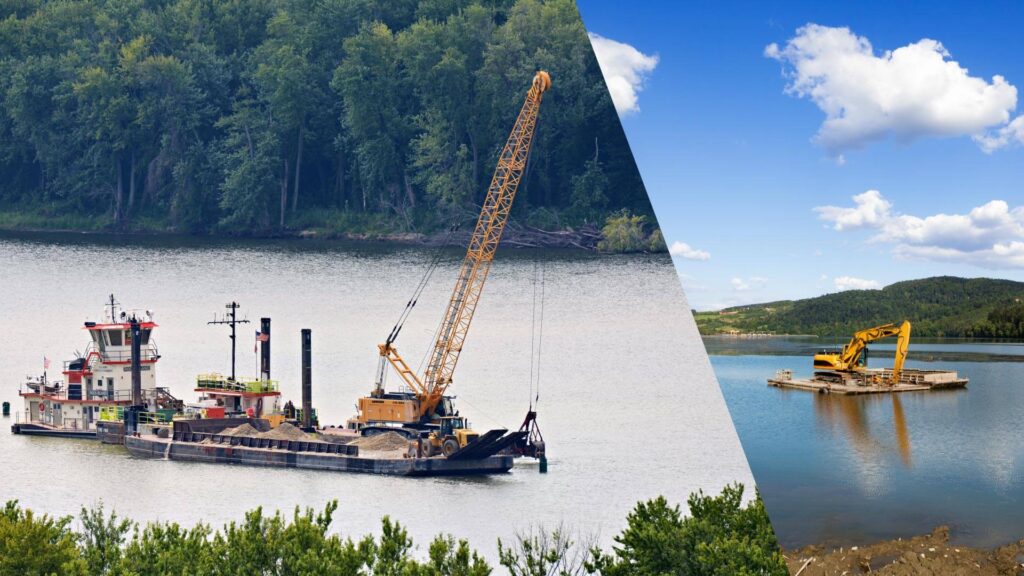
While both lakes and rivers require dredging to maintain their functionality and health, the approaches, equipment, and challenges involved can differ significantly. Understanding these differences is crucial for ensuring effective and sustainable dredging operations in each type of water body. Whether you’re undertaking river dredging or planning to dredge for a lake, adapting techniques to suit the unique characteristics of the water body is essential.
Differences in Approach
The primary difference between dredging for rivers and dredging lakes lies in the nature of the water movement. Rivers are dynamic systems with constant water flow, which makes sediment removal more challenging. In contrast, lakes are typically still bodies of water, allowing for easier sediment containment and handling.
- River Dredging focuses on managing the continuous movement of water, which can disturb sediments and spread turbidity. Specialized techniques are required to stabilize dredging equipment and control sediment dispersion.
- Lake Dredging: In a lake environment, dredging operations can be planned with more precision since water flow is minimal. This allows for more straightforward sediment removal and disposal practices.
Differences in Equipment
The choice of equipment plays a critical role in the success of river and lake dredging projects. Due to the unique conditions of each environment, equipment must be carefully selected to handle the specific challenges posed by each water body.
- River Dredging: Rivers often require more versatile and robust dredging equipment, such as cutter suction dredges or amphibious dredges, to handle varying sediment compositions and strong currents. The equipment must also be mobile enough to navigate narrow channels and adjust to changes in water flow.
- Lake Dredging: For lake projects, simpler equipment like hydraulic dredges or mechanical excavators may suffice. A lake’s still waters make it easier to deploy stationary dredging systems, which can operate with minimal disruption to the surrounding environment.
Differences in Challenges
The physical and ecological characteristics of each water body largely dictate the challenges of dredging a river versus dredging for lake.
- River Dredging: The primary challenges include dealing with flowing water, sediment transport, and fluctuating water levels. River dredging projects often require strategies to minimize downstream impact and ensure that sediment is effectively removed without causing additional environmental damage.
- Lake Dredging: While lake dredging avoids the complications of water flow, challenges include handling large volumes of sediment that may have accumulated over decades and ensuring minimal disruption to recreational activities or nearby developments.
Adapting Techniques for Different Water Bodies
The key to successful dredging—whether it’s river dredging or lake dredging—is adapting techniques to suit the specific needs of the project. Pre-dredging surveys, environmental assessments, and customized equipment selection are all vital steps in this process.
Dredging for rivers, techniques such as sediment containment systems, turbidity controls, and advanced GPS mapping to track progress are essential for overcoming the complexities of flowing water. In contrast, given stable water conditions, lake dredging projects can focus more on precision sediment removal and efficient sediment disposal.
Ultimately, both river dredging and dredging for lakes require careful planning and execution to achieve their goals. By understanding the unique differences and tailoring methods to each environment, dredging projects can be carried out effectively while minimizing environmental impact and maximizing efficiency.
Conclusion
River dredging is critical for maintaining navigable waterways, controlling floods, and preserving aquatic ecosystems. However, it also presents its challenges, including environmental impact, varying sediment compositions, equipment selection, navigational constraints, and project delays. These complexities make it essential to approach each dredging project with a clear understanding of the unique conditions of the waterway, whether you’re working on dredging a river or planning dredging for lakes.
The importance of strategic planning cannot be overstated. Comprehensive pre-dredging surveys, feasibility studies, and well-defined budgets lay the foundation for successful projects. Leveraging advanced equipment and technologies, such as automation and GPS mapping, can significantly improve efficiency and accuracy while minimizing environmental disruption. Additionally, adhering to best practices for environmental management and collaborating with regulatory agencies and industry experts is essential for meeting compliance requirements and fostering community support.
To ensure the success of your river dredging project, it is crucial to explore innovative tools and techniques that can help overcome the challenges. Collaborating with experienced professionals who understand the nuances of dredging—whether for rivers or lakes—can provide the insights and resources needed to achieve your project goals efficiently and sustainably. By adopting a proactive, informed approach, you can help preserve waterways for future generations while meeting the immediate needs of your project.


